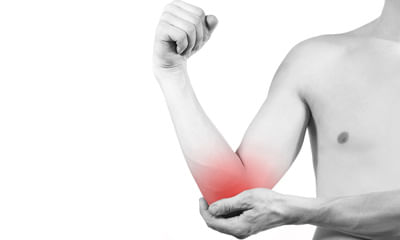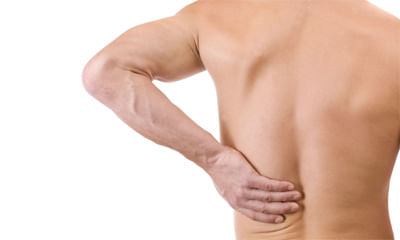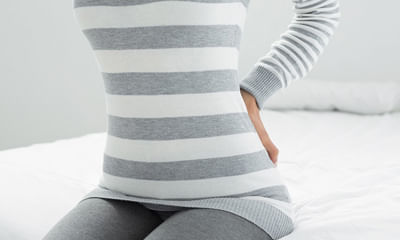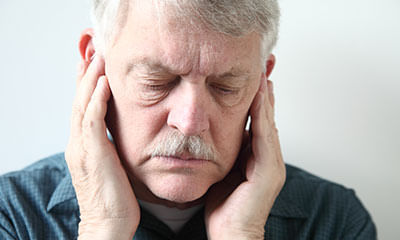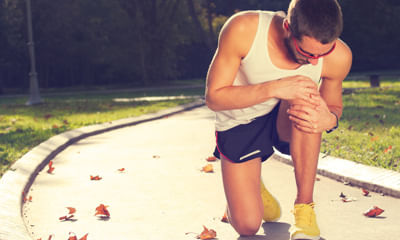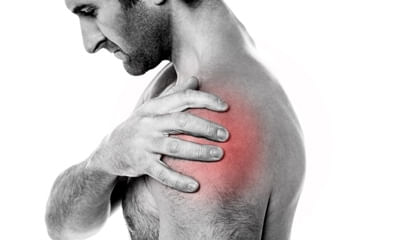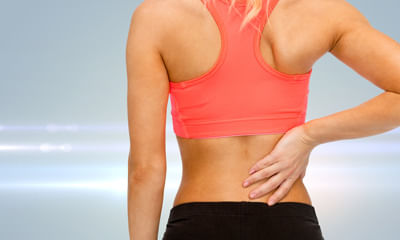Pins And Needles In Neck And Shoulder
I am suffering from pain in finger and thumb of my hands. I have problem in movement of the thumb it's not smooth anymor ...
Ask Free Question
This is cervical pain (neck pain) and that's the reason the pain radiates until the shoulder blades. If you keep ice that would help and along side you can do hot water fermentation. You shall use cervical collar which would help you to reduce the radiating pain ie. Due to the nerve compression. You have to go for traction and also you can do ift. Please consult the near by therapist for quick relief. Since you have pain for more than 10 years it is suggestible to go for cervical muscle strengthening exercise. Use collar will definitely be helpful for him to maintain the good posture. And also cervical pillow can be used which might make you to have better posture of the shoulder neck and arm. Neck tilt: from the sitting position, tilt your head down so your chin touches your chest. Hold this position for 5 second s. Return to the starting position and repeat. Do this five times. Side-to-side neck tilt. From the same starting position, tilt you neck toward one shoulder, leading with your ear. Hold for 5 seconds and then return to the starting position. Do this five times on each side. Neck turn. Look straight ahead, then turn your head to one side, keeping your chin at the same level. Do this five times on each side. Neck stretch. Holding the rest of your body straight, push your chin forward, stretching your throat. Hold for 5 seconds. From the same starting position, push your chin backward and hold for 5 seconds. Do the forward and backward stretch five times each.
Hi since 2 months I am suffering from upper back pain, now I am getting needle pricking and burning sensation all over b ...
Ask Free Question
You can consult ortho or neuro, any one. Do check your hb, blood sugar fasting from some lab. Do an x-ray of cervical spines. Below are exercises that strengthen the lower back and help manage lower back pain: 1. Bridges—lie on the ground and bend the knees, placing the feet flat on the floor hip-width apart. Press the feet into the floor, keeping the arms by the sides. Raise the buttocks off the ground until the body forms a straight line from the shoulders to the knees. Squeeze the buttocks with the shoulders remaining on the floor. Lower the buttocks to the ground and rest for a few seconds.Repeat 15 times and then rest for 1 minute.Do 3 sets of 15 repetitions.2. Knee-to-chest stretches— lie on the back on the floor. Bend the knees, keeping both feet flat on the floor. Use both hands to pull one knee in toward the chest. Hold the knee against the chest for 5 seconds, keeping the abdominals tight and pressing the spine into the floor. Return to the starting position. Repeat with the opposite leg. Repeat with each leg 2–3 times twice a day. 3. Lower back rotational stretches—lie back on the floor with bent knees and feet flat on the ground. Keeping the shoulders firmly on the floor, gently roll both bent knees over to one side. Hold the position for 5–10 seconds. Return to the starting position. Gently roll the bent knees over to the opposite side, hold, and then return to the starting position. Repeat 2–3 times on each side twice a day. 4. Draw-in maneuvers— lie back on the floor with knees bent and feet flat, keeping the arms by the sides. Breathe in deeply. While breathing out, pull the bellybutton toward the spine, tightening the abdominal muscles and keeping the hips still. Hold the position for 5 seconds. Repeat 5 times. 5. Pelvic tilts— lie back on the floor with knees bent and feet flat, keeping the arms by the sides. Gently arch the lower back and push the stomach out. Hold for 5 seconds, then relax. Flatten the back and pull the bellybutton in toward the floor. Hold for 5 seconds, then relax. Increase the number of repetitions daily, building up to 30. 6. Lying lateral leg lifts— lie on one side with the legs together. Keep the lower leg slightly bent. Draw the bellybutton into the spine to engage the core muscles. Raise the top leg about 18 inches, keeping it straight and extended. Hold the position for 2 seconds. Repeat 10 times. Turn onto the other side of the body and repeat, lifting the other leg. Perform 3 sets on each side. 7. Cat stretches— get onto the hands and knees with the knees hip-width apart. Arch the back, pulling the bellybutton up toward the spine. Slowly relax the muscles and allow the abdomen to sag toward the floor. Return to the starting position. Repeat 3–5 times twice a day. 8. Supermans— lie face down on the ground and stretch both arms out in front of the body, keeping the legs stretched out and flat on the ground. Raise both the hands and feet, aiming to create a gap of about 6 inches between them and the floor. Try to pull in the bellybutton, lifting it off the floor to engage the core muscles. Keep the head straight and look at the floor to avoid neck injury. Stretch the hands and feet outward as far as possible. Hold the position for 2 seconds. Return to the starting position. Repeat 10 times. For this homeopathic treatment is very effective consult online with details.
Recently my back is hurting. It started when I was sweeping on our backyard. Every time I do a work that includes bendin ...
Ask Free Question
Anaemia always leads to the symptoms of being tired and also having leg pain though there are no issues with the knee joint or back pain. It is due to gastritis. You can drink hot water to feel better along with regular aerobic activities and breathing exercises. It might be due to gastric trouble. Kindly do breathing exercises which might help you to get reduced with pain in the back.
Doctor 3 weeks se tmj me muscle spasm hai. Normally no pain. I can eat, laugh and do everything but jaw ko tight krte ti ...
Ask Free Question
Tmj disorders may cause mild to debilitating symptoms, such as:•pain while chewing •pain in the ear, face, jaw, and neck •clicking, grating, or popping sounds in the jaw when you open or close your mouth •locking of the jaw joint, headaches exercises for tmj pain relief 1. Relaxed jaw exercise rest your tongue gently on the top of your mouth behind your upper front teeth. Allow your teeth to come apart while relaxing your jaw muscles. 2. Goldfish exercises (partial opening) place your tongue on the roof of your mouth and one finger in front of your ear where your tmj is located. Put your middle or pointer finger on your chin. Drop your lower jaw halfway and then close. There should be mild resistance but not pain. A variation of this exercise is to place one finger on each tmj as you drop your lower jaw halfway and closed again. Do this exercise six times in one set. You should do one set six times daily. 3. Goldfish exercises (full opening) keeping your tongue on the roof of your mouth, place one finger on your tmj and another finger on your chin. Drop your lower jaw completely and back. For a variation of this exercise, place one finger on each tmj as you completely drop your lower jaw and back. Do this exercise six times to complete one set. You should complete one set six times daily. 4. Chin tuckswith your shoulders back and chest up, pull your chin straight back, creating a “double chin.” hold for three seconds and repeat 10 times. 5. Resisted opening of the mouth place your thumb under your chin. Open your mouth slowly, pushing gently against your chin for resistance. Hold for three to six seconds, and then close your mouth slowly. 6. Resisted closing of the mouth squeeze your chin with your index and thumb with one hand. Close your mouth as you place gently pressure on your chin. This will help strengthen your muscles that help you chew. 7. Tongue up with your tongue touching the roof of your mouth, slowly open and close your mouth. 8. Side-to-side jaw movement put a ¼ inch object, such as stacked tongue depressors, between your front teeth, and slowly move your jaw from side to side. As the exercise becomes easier, increase the thickness of the object between your teeth by stacking them one on top of each other. 9. Forward jaw movement put a ¼ inch object between your front teeth. Move your bottom jaw forward so your bottom teeth are in front of your top teeth. As the exercise becomes easier, increase the thickness of the object between your teeth. Other ways to manage your tmj pain over-the-counter pain relievers such as ibuprofen and acetaminophenmay help relieve tmj pain. Muscle relaxers may be prescribed for severe pain. Doctors may also recommend: tmj pain may also be managed with simple lifestyle changes. You may wish to: •eat a soft diet to allow the tmj to relax •avoid chewing gum •avoid biting your nail •avoid biting your lower lip •practice good posture •limit large jaw movements, such as yawning and singing tips to reduce pain and help make sure your teeth and gums stay healthy: •use a soft-bristle toothbrush or a sonic toothbrush. •use a rubber tip stimulator or water flosser if you can’t open your mouth to floss. •add an antiseptic mouth rinse to your daily dental care regimen. •tell your dental care team if you’re in pain during a dental procedure. •apply ice or heat after a dental procedure. •talk to your dentist about ways to remove plaque other than flossing. For example, they may suggest wiping your teeth with cotton gauze. The following home remedies may provide some relief: •ice or cold packs to the area of the joint •over-the-counter (otc) nonsteroidal anti-inflammatory drugs (nsaids), such as ibuprofen (advil, motrin) or naproxen (aleve), and other pain relievers, including aspirin (ecotrin) and acetaminophen (tylenol) •eating soft foods and avoiding chewing gum •massage or gentle self-stretching of the jaw and neck muscles (a doctor or physical therapist can recommend appropriate stretches.) •relaxation techniques and stress management and reduction.
I have a narrowing of the c6 and 7 in my neck with pins and needles in all my fingers. Sometimes my neck can't be moved ...
Ask Free Question
This is cervical pain (neck pain) and that's the reason the pain radiates until the shoulder blades. If you keep ice that would help and along side you can do hot water fermentation. You shall use cervical collar which would help you to reduce the radiating pain ie. Due to the nerve compression..
Hi, I have needle prick pain below my right shoulder. What would be the best solution for it? I have tried ayurveda mess ...
Ask Free Question
It is called as peri arthritis shoulder and for that you can do hot water fermentation and ice therapy at home. If you have shoulder pain then the stiffness will develop more that might make the arm to have less improvement which might make you to feel more pain the arm. And also cervical pillow can be used which might make you to have better posture of the shoulder neck and arm. Shoulder exercises and stretchesregular exercises and stretches can keep your shoulder strong and flexible. A few things to remember before swinging in to exercises: •stop any exercise if you have more shoulder pain. It may be too soon for you to try. •watch your form. Exercising incorrectly can also cause or worsen shoulder problems. •warm up, even before deep stretching. Light shoulder rolls, gentle movements, or even a warm shower are all ways to warm up your muscles before exercise and stretching. Pendulum stretch for range of motion•stand and bend at the waist. •let your arm on the injured side hang straight down. •keep your neck relaxed. •move your arm in a circle up to 20 times. •do once or more times in a day. Overhead shoulder stretch•sit or stand to do this shoulder stretch. •intertwine your fingers in front of you. •bend your elbows and raise your arms above your head. You can also place your hands on your head or behind it. •gently squeeze your shoulder blades together to move your elbows back. •continue for up to 20 repetitions. Repeat 5 to 10 times a day. Physical therapyphysical therapy is the most common treatment for a frozen shoulder. The goal is to stretch your shoulder joint and regain the lost motion. It can take anywhere from a few weeks to nine months to see progress. A home exercise program of gentle range of motion exercises is important. If you don't see progress after six months of intense, daily exercises, speak to your doctor about other options.
Since around 3-4 months I have had a sensation of pins and needles on my left shoulder blade all the way up to my should ...
Ask Free Question
Hi sir may be you are suffering from rotators cuff tendinosis. So confirmation you consult your nearest physio. A. Start ice pack 3 times in a day for 10 dayes b. After pain relief you start some prescribed exercise. C. Rotators cuff strengthen exercises with orange resistant band. D. Perischapular strength exercise. E. Range of motion exercises. Pleased updated me after 7 days we are happy to help you.
I am 30 years old I have been suffering pain behind the neck. Last vertebra in the left side .the pain started in 2015 w ...
Ask Free Question
As your rightly said you have to go for traction and also you can do IFT. Please consult the near by therapist for quick relief. Since you have pain for more than 10 years it is suggestible to go for cervical muscle strengthening exercise. Use collar will definitely be helpful for him to maintain the good posture. And also cervical pillow can be used which might make you to have better posture of the shoulder neck and arm. This is cervical pain (neck pain) and that's the reason the pain radiates until the shoulder blades. If you keep ice that would help and along side you can do hot water fermentation. You shall use cervical collar which would help you to reduce the radiating pain ie. Due to the nerve compression Frequent neck sprain is one of the symptom which is prone to have neck problem ie. Spondylotic changes.
Pain in shoulder and neck, tingling ,pins needles and pain in the legs for many days continuously. Feeling this every da ...
Ask Free Question
Hi. As per your symptoms, you may have been suffering from myofacial syndrome. Do general fitness exercises and massage on your back. It will help you.
Are these symptoms of Fibromyalgia? 1) Pins And Needles sensations 2) muscles pain all over body 3) bowel changes (IBS & ...
Ask Free Question
It's due to nerve root compression happening at the spine levels along with vitamin D 3 level deficiency, treat it properly.

